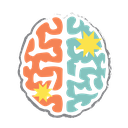

Children create a definition for an unfamiliar word.
Materials
- List of words appropriate for group
- Paper
- Pencil
Framing
Sometimes, if we know the root of a word or its structure or context, we can guess what it means. This activity will help children make those connections and associations.
Instructions
- Divide children into teams and give each team a piece of paper and a pencil.
- Read one of the unfamiliar words.
- Ask the groups to write down what they think the word means. Remind them to look for clues (i.e. Are there big words in the small words? Is there a prefix? Is it similar to another word?).
- After each team has written their answers, they can fold the paper and place it in the center.
- A staff member will then read aloud the answers.
- Groups vote on who they think answered correctly.
- Any group that guessed correctly receives a point.
Modify
- Provide hints if children are struggling.
- Select words that are appropriate for your group and their skill level.
Safety
- Participants could get frustrated if they are having difficulty thinking of definitions.
Wrap-up
Find out which types of words your group was having more difficulty with and consider playing again with more of those. Remind them that words that have a prefix provide hints as to what they mean (ie. un - reversed action; pre - before; post - after; re - do again; etc.).
Obtained from: